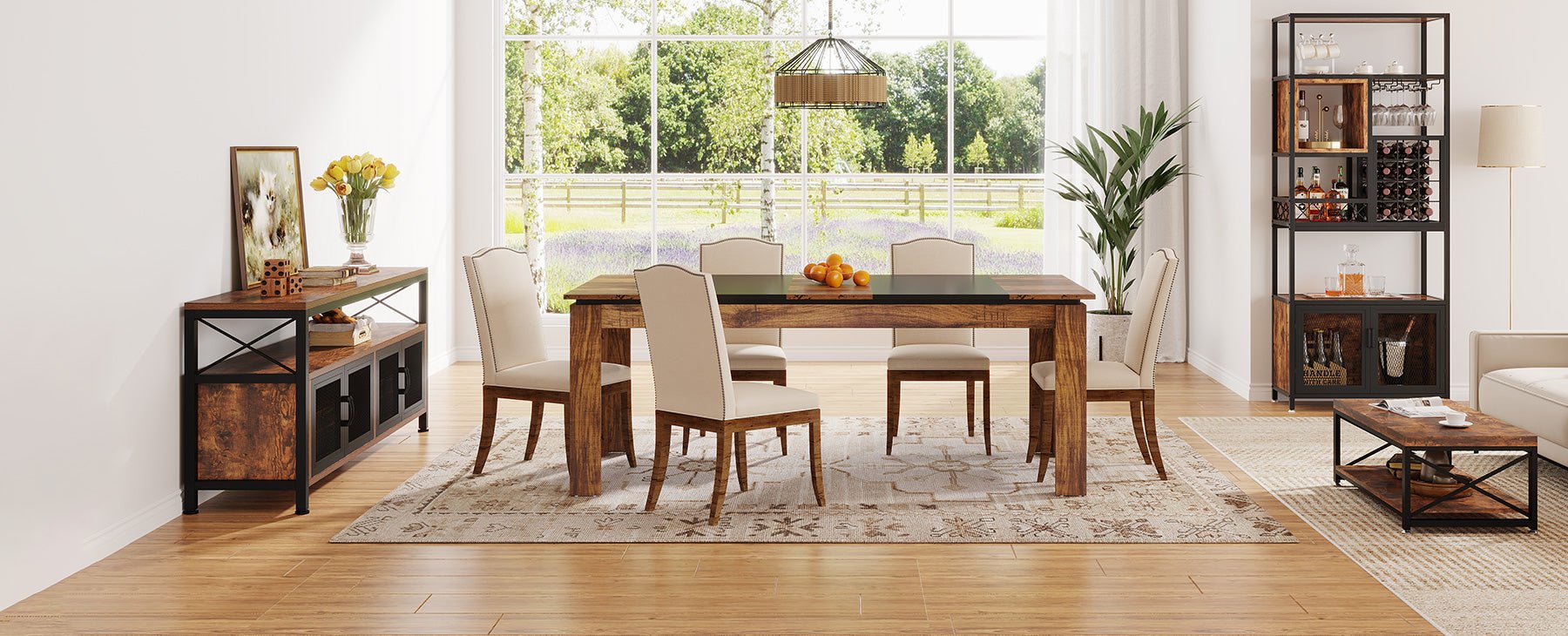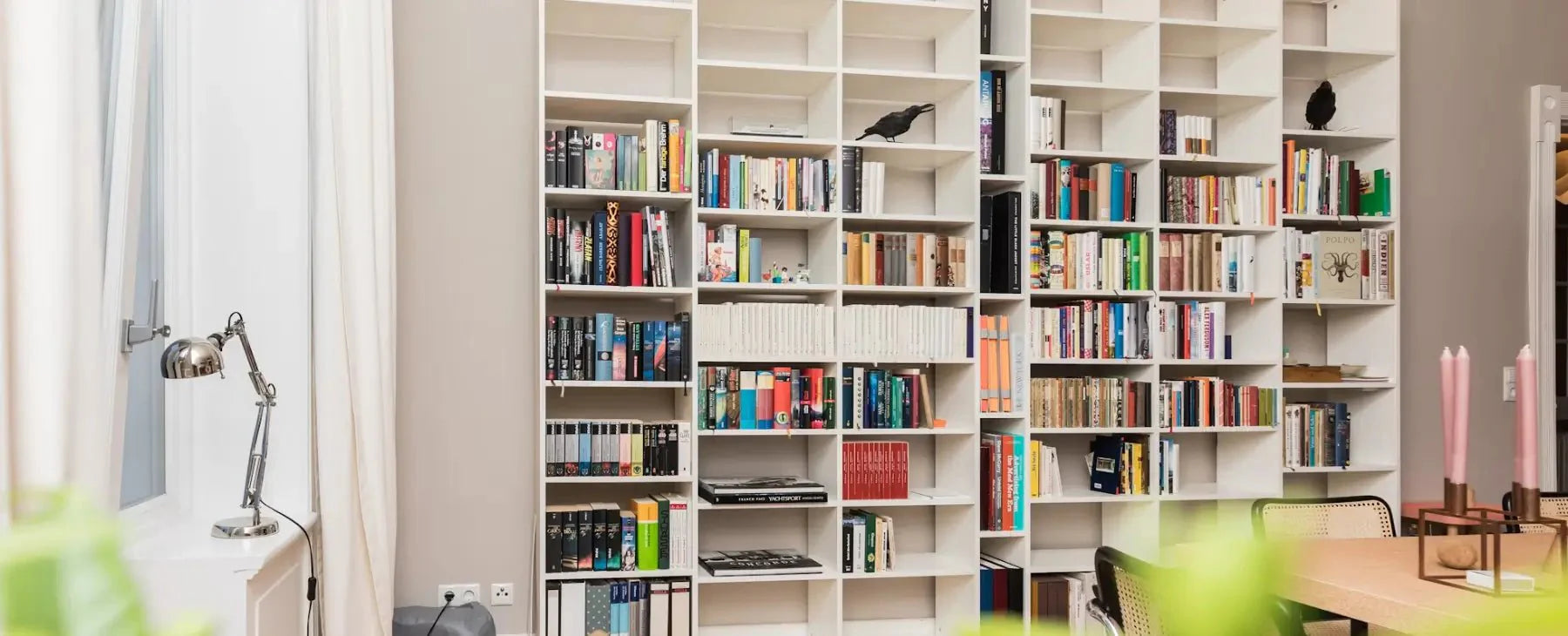What Is a Sideboard Furniture?
Advantages of a Sideboard
Sideboards aren’t just stylish — they’re incredibly functional pieces that can enhance the way you use and enjoy your space. Here are some key benefits of incorporating a sideboard into your home:
Provides Extra Storage
One of the most practical benefits of a sideboard is the added storage it provides. With a combination of drawers, shelves, and cabinets, it’s perfect for stowing away dining linens, dishware, board games, office supplies, or even seasonal décor.
No more cluttered tables or overflowing kitchen cabinets — a sideboard keeps your essentials neatly tucked away yet easily accessible.
Improves Organization
They help bring structure to your space. By designating a place for your items, you make it easier to maintain a clean, organized home. Some models even include adjustable shelving, making it simple to tailor the interior to your specific needs.
Creates a Stylish Display Area
In addition to storage functions, sideboards also have a large countertop that can be used as a decorative display area. Use it to display framed artwork, vases, candles, or even place a striking mirror above to add depth to the space, or display precious photos and collections. It is both beautiful and practical, and it is the focus of the space. Whether you like the style of mid-century modern, rural pastoral style, or fashionable modern style, Tribesigns always has a sideboard to match it. With its slender surface and unique contour, it can add a visual focus to your dining room or living space.
Durable and versatile
Sideboards are durable. Many sideboards are made of durable materials such as solid wood, engineered wood, or metal, which are durable. In addition, their uses are extremely versatile-while they are traditionally placed in the dining room, they now appear in the entryway, hallway, bedroom, and even TV cabinets in the living room.
59" Luxury Buffet Storage Cabinet with 4 Doors $198.99
What’s the Difference Between a Sideboard and a Buffet?
If you've ever shopped for dining room furniture, you've probably seen the terms sideboard and buffet used interchangeably. These two pieces are very similar in both form and function, but there are a few subtle differences that can help you decide which is right for your space.
Here’s a quick side-by-side comparison to make it easier:
|
Feature |
Sideboard |
Buffet |
|
Common Use |
Living room, hallway, entryway |
Dining room |
|
Leg Style |
Short legs or base cabinet style |
Taller legs for elevated presentation |
|
Storage |
Cabinets, drawers (often enclosed) |
Cabinets, sometimes open shelving |
|
Design Style |
More versatile and decorative |
Traditional, formal appearance |
|
Top Surface Use |
Décor, lamps, media displays |
Serving food, setting out dishes |
Sideboard vs Credenzas
You might also hear the term credenza tossed into the mix. It’s closely related to sideboards and buffets, often used in office or media settings. Credenzas typically have a sleeker, more modern profile and may sit flush to the ground with sliding doors or minimal hardware.
While all three serve similar storage purposes, your choice usually comes down to where you plan to place it — and how you want it to look and function.
How To Choose the Right Sideboard for Your Dining Room
Choosing the perfect sideboard isn't just about picking something that looks good — it's about finding a piece that fits your space, meets your storage needs, and complements your dining room style. Here’s how to make the right choice:
Choose a Design Type That Fits Your Style
Sideboards come in a variety of designs, from classic to contemporary. The right design should enhance your dining room’s aesthetic and tie the space together.
- Traditional: Often made of wood with ornate detailing, ideal for formal dining rooms.
- Modern: Clean lines, minimal hardware, often in lacquer or metal finishes.
- Farmhouse: Rustic finishes, sliding barn-style doors, and distressed wood tones.
- Mid-Century: Tapered legs, natural wood tones, and sleek silhouettes.
✅ Tip: Match your sideboard’s design to your dining table or chairs for a cohesive look, or use it as a bold statement piece in a neutral room.
Compare Common Materials
The material of your sideboard will impact not only its look but also its durability and maintenance.
- Solid Wood: Classic, durable, and long-lasting. Great for traditional and rustic styles.
- Veneer: More affordable with a real-wood appearance, but less resistant to damage.
- MDF or Engineered Wood: Budget-friendly and stable, often used in modern designs.
- Metal or Glass Accents: Add a sleek, modern edge or industrial feel.
✅ Tip: If you have kids or pets, go for scratch-resistant finishes and easy-to-clean surfaces.
Determine the Sideboards Size for Your Space
Choosing the right size is crucial — too large, and it overwhelms the room; too small, and it may not serve its purpose.
- Length: Most sideboards range from 48 to 72 inches wide. Pick one that’s proportionate to your wall and table length.
- Height: Standard sideboard height is around 34 to 36 inches, aligning with most dining tables for easy serving.
- Depth: Typically 16 to 20 inches — deep enough for storage, but not so bulky that it crowds the room.
✅ Tip: Leave at least 24 inches of clearance between the sideboard and dining chairs to allow for easy movement.
59.4" Sideboard Buffet $219.99
Final Thoughts
The right sideboard can help you create a neat, stylish, and efficient space. By choosing the design, material, and size that best suit your needs, you're sure to find a sideboard that blends in perfectly with your home style. If you're looking for quality and versatility, Tribesigns Furniture offers a wide range of sideboards and dining cabinets to complement a variety of styles - from modern minimalist to rustic.
Explore Tribesigns' beautiful collection of sideboards and dining cabinets to find the perfect pair to complement your dining room.






